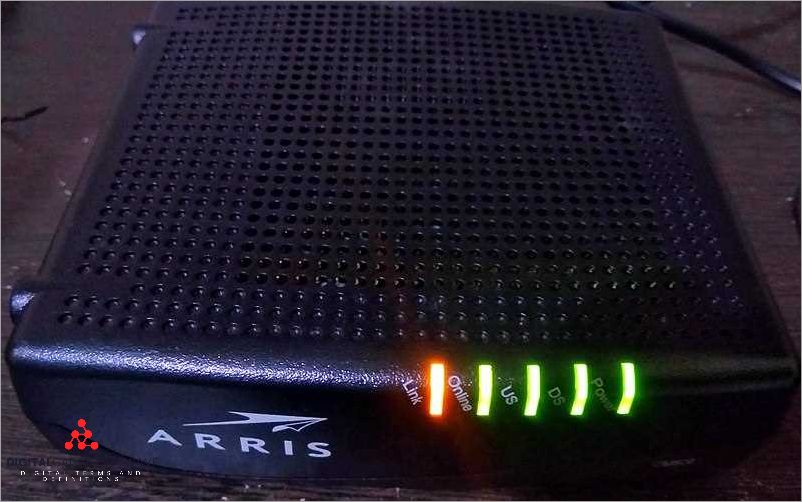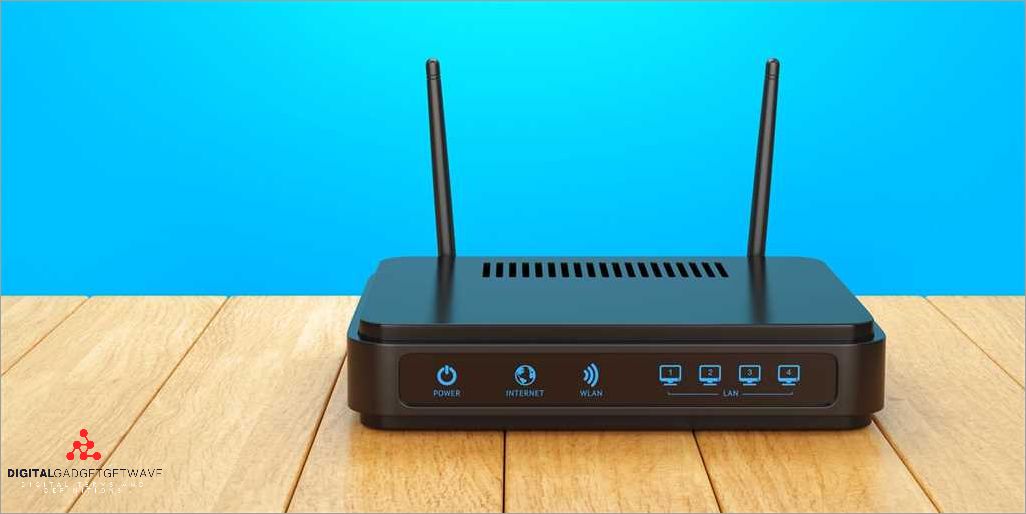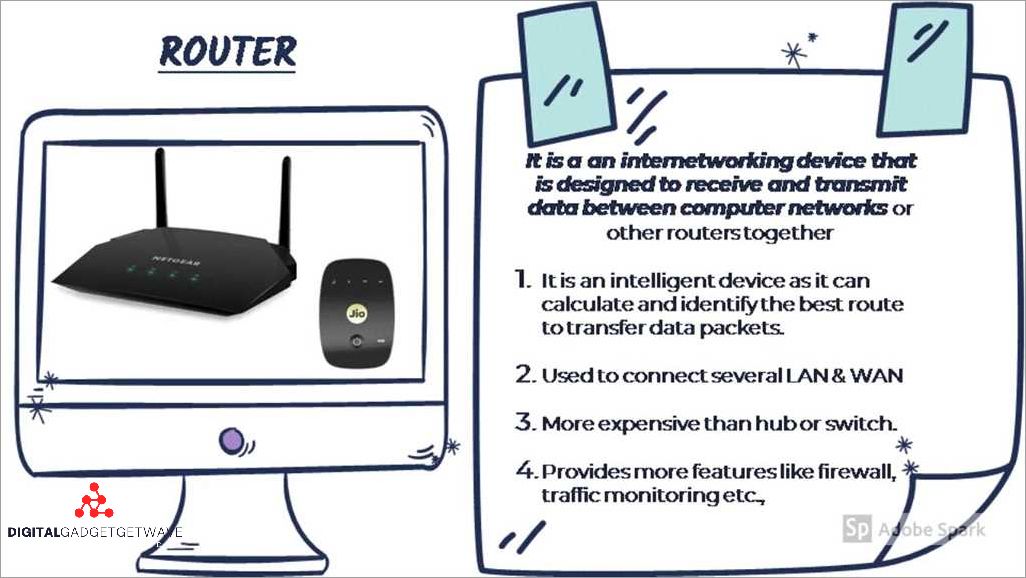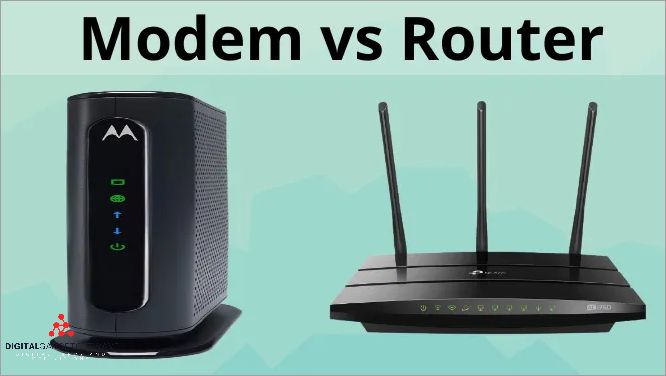
A modem is an essential device for connecting to the internet through an Internet Service Provider (ISP). However, its functionality goes beyond just providing an internet connection. A modem can also function as a bridge, connecting multiple devices to a network.
Furthermore, a modem can act as a server, allowing devices on a network to access its resources. It serves as a gateway, enabling communication between different networks, while also acting as a firewall, protecting the network from unauthorized access.
In addition, a modem can function as a switch, allowing for the efficient transfer of data between connected devices. It can also support bridging, which enables devices on different networks to communicate with each other.
Moreover, a modem can serve as a router, directing data packets between different devices on a network. It can handle various types of connections such as Ethernet, wireless, or even both. Additionally, a modem may have multiple ports, allowing for the connection of several devices simultaneously.
In summary, a modem is more than just a device for connecting to the internet. It can function as a bridge, server, gateway, firewall, switch, router, and more. Its versatility makes it an essential component of any networking setup.
Contents
- 1 Router
- 2 Network Switch
- 3 Access Point
- 4 Firewall
- 5 FAQ about topic “Exploring the Versatility of Modems: Beyond Internet Connectivity”
- 6 Can a modem function as a router?
- 7 Is it possible to use a modem as a wireless access point?
- 8 Can a modem be used as a fax machine?
- 9 Can a modem function as a wireless repeater?
- 10 Is it possible to use a modem as a network switch?
Router
A router is a networking device that connects multiple devices and networks together. It functions as a gateway, allowing data transmission and connection between different networks. It has multiple ports, which can be used to connect different devices through ethernet cables.
A router also acts as a server, managing and directing network traffic. It uses bridging and switching techniques to determine the best transmission path for data packets. It analyzes the destination IP addresses and uses routing protocols to ensure efficient data transfer.
One of the important functions of a router is its firewall capabilities. It acts as a security device, filtering and blocking unwanted traffic from entering the network. It can be configured to allow or deny specific types of connections and protect the network from external threats.
A router also enables wireless networking. It can broadcast wireless signals, allowing devices to connect and access the internet without the need for ethernet cables. This makes it a convenient device for homes and offices where multiple devices need to access the internet wirelessly.
Furthermore, a router can act as a hub or switch, allowing multiple devices to connect to a network and share resources. It manages the network traffic and distributes data packets efficiently, ensuring smooth data transmission between connected devices.
In summary, a router plays a crucial role in networking by acting as a gateway, server, firewall, and switch. It provides connectivity and manages network traffic, allowing devices to communicate and access the internet. Its versatility and functionality make it an essential device for modern networking.
Wireless Router
A wireless router is a device that combines the functions of a wireless access point and a router. It enables wireless transmission of data over a computer network. The wireless router serves as a link between multiple devices, allowing them to connect to the internet or communicate with each other wirelessly.
One of the main features of a wireless router is its ability to connect to an Ethernet port, which is typically provided by an Internet Service Provider (ISP). This allows the router to act as a gateway for the network, providing a connection point for devices to access the internet. The router is responsible for routing data packets between devices and the internet.
A wireless router also acts as a network switch, allowing multiple devices to connect to the network. It typically has multiple Ethernet ports that can be used to connect wired devices, such as computers and printers. These ports allow the devices to communicate with each other and share data across the network.
In addition, a wireless router often includes a built-in firewall, which helps protect the network from unauthorized access and prevents malicious attacks. The firewall filters incoming and outgoing network traffic and can be customized to meet specific security requirements. This adds an extra layer of protection for the network and the devices connected to it.
Some advanced wireless routers also offer additional features, such as a file server, a media server, or a print server. These features allow users to share files, stream media content, or print documents directly from the router. This enhances the functionality of the network and provides added convenience for users.
Overall, a wireless router is an essential device for networking and bridging the gap between devices and the internet. It provides a wireless connection for multiple devices, acts as a gateway for the network, and offers various additional features to enhance the functionality and security of the network.
Wired Router
A wired router is a networking device that acts as a bridge or gateway between multiple devices in a local area network (LAN) and the internet. It is designed to manage and direct the flow of data packets between these devices, ensuring efficient transmission of data.
One of the main functions of a wired router is to provide internet connectivity to the devices connected to it. It connects to the internet service provider (ISP) through an Ethernet port, establishing a link between the local network and the internet. This allows users to access the internet and browse websites, send and receive emails, and perform other online activities.
A wired router also acts as a firewall, protecting the network from unauthorized access and potential security threats. It examines the data packets passing through it and filters out any suspicious or malicious packets that could harm the network. It helps to secure the network and prevent unauthorized access to sensitive information.
In addition to being a firewall, a wired router can also function as a switch or hub. It can connect multiple devices within the local network, allowing them to communicate with each other and share resources. This enables users to share files, printers, and other resources within the network.
Furthermore, a wired router can also act as a server, providing various services to the devices within the network. It can host websites, email servers, DNS servers, and other applications, enhancing the networking capabilities of the local network.
A wired router supports different types of connections, such as Ethernet and wireless connections. It can be connected to devices through Ethernet cables, enabling high-speed and stable data transmission. It can also connect to devices wirelessly, using Wi-Fi technology, providing convenience and flexibility in network connectivity.
Overall, a wired router plays a crucial role in networking by bridging the gap between the local network and the internet. It facilitates the smooth transmission of data, ensures network security, and enables efficient communication between devices within the network.
Network Switch
A network switch is a hardware device that connects multiple devices within a local area network (LAN). It is commonly used in home and office setups to enable communication between computers, printers, servers, and other networking devices. The switch operates at the data link layer of the OSI model, allowing for the transmission of data packets between connected devices.
Unlike a hub, which broadcasts data to all connected devices, a switch intelligently routes data only to the intended recipient device. This improves network efficiency and reduces traffic congestion. Switches can support different types of connections, such as Ethernet and wireless, and provide multiple ports for connecting devices.
Network switches also have various advanced features that enhance network security and management. For example, switches can have built-in firewalls to protect against unauthorized access and malicious attacks. They can also function as servers, serving as a central point for managing network resources and configurations.
Additionally, switches can perform network bridging, which allows for the connection of two separate networks. This can be useful in situations where different networks need to communicate with each other. Switches can also act as gateways, providing a connection between the local network and the internet through an Internet Service Provider (ISP).
In summary, a network switch is a crucial component in networking infrastructure. It serves as a central hub for connecting devices within a network, enabling efficient data transmission, improved security, and network management. Whether for home or business use, a network switch plays a vital role in maintaining a reliable and high-performing network.
Managed Switch

A managed switch is a network device that operates in the same way as a regular switch, allowing multiple devices to connect to a local area network (LAN). However, unlike an unmanaged switch that simply forwards data packets between connected devices, a managed switch offers additional features and functionality that can be configured and controlled by a network administrator.
One of the primary functions of a managed switch is to provide the ability to segment a network into multiple virtual LANs (VLANs). This allows for better organization of network resources and improves overall network security. By creating separate VLANs, different groups of devices can be isolated from one another, preventing unauthorized access and reducing the risk of network attacks.
In addition to VLAN support, managed switches often have other advanced features such as port mirroring, which allows network administrators to monitor network traffic for troubleshooting purposes. They can also support Quality of Service (QoS) settings, which prioritize certain types of network traffic to ensure smooth and uninterrupted transmission of data.
Managed switches can also act as bridges between different networks, allowing devices from one network to communicate with devices from another network. This bridging functionality is often used in conjunction with routing devices, such as routers, to provide interconnectivity between networks and facilitate the transmission of data across the internet.
Furthermore, managed switches can be configured to act as wireless access points, enabling devices to connect to a Wi-Fi network. This eliminates the need for separate wireless routers or access points, simplifying network setup and management.
Overall, a managed switch is an essential networking device that offers more control and flexibility than an unmanaged switch. With its advanced features and configuration options, it provides network administrators with the ability to optimize their networks for better performance, security, and efficiency.
Unmanaged Switch

An unmanaged switch is a networking device that operates at the Data Link layer of the OSI (Open Systems Interconnection) model. It allows for the connection of multiple devices, such as computers, servers, and printers, within a local area network (LAN). Unlike a hub, which simply forwards all data to all ports, an unmanaged switch intelligently directs data to the target device based on its MAC (Media Access Control) address.
When a device within the network wants to communicate with another device, it sends data packets containing the MAC address of the target device. The unmanaged switch receives these packets and uses its MAC forwarding table to determine the appropriate port to forward the data to. This process is known as bridging, as the switch creates a direct link or connection between the transmitting and receiving devices.
An unmanaged switch typically contains multiple Ethernet ports, allowing for the simultaneous connection of multiple devices. Each port functions as an independent link within the network, providing a dedicated path for data transmission. The switch also supports various network protocols, such as TCP/IP, which enable seamless communication between devices.
One of the main advantages of an unmanaged switch is its simplicity. As it does not require any configuration or management, it is easy to set up and use. Additionally, unmanaged switches are typically more affordable compared to managed switches, making them suitable for small networks or home use.
However, it is important to note that unmanaged switches do not offer advanced features such as VLAN (Virtual Local Area Network) support, quality of service (QoS) prioritization, or security features like firewalls or gateways. These advanced functionalities are typically found in managed switches, which provide greater control and flexibility for network administrators.
In summary, an unmanaged switch is a fundamental networking device that provides the basic functionality of directing data packets within a LAN. It allows for the efficient and seamless transmission of data between devices, making it an essential component of any network infrastructure.
Access Point
An access point is a hardware device that is used to create a wireless local area network (WLAN) by connecting wireless devices to a wired network. It acts as a bridge between the wireless and wired network, providing wireless connectivity to devices such as laptops, smartphones, and tablets.
The access point typically has multiple ports, including an Ethernet port for connecting to the wired network and one or more antenna ports for transmitting and receiving wireless signals. It can also support bridging, which allows the connection of multiple access points to extend the coverage of the wireless network.
Access points serve as the entry point into a network, providing a seamless connection between the user’s device and the internet service provider (ISP). They handle the transmission of data packets between the wireless devices and the network, ensuring a reliable and secure connection.
In addition to serving as a bridge between the wired and wireless network, access points can also function as other networking devices. For example, they can be configured as a wireless server, switch, hub, gateway, router, or firewall.
A wireless server, for instance, allows users to share files, printers, or other resources over the network. A switch enables the connection of multiple devices on the same network. A hub, on the other hand, is a simple networking device that connects multiple devices together. A gateway or a router manages the flow of data between different networks, while a firewall provides security by monitoring and filtering network traffic.
Overall, an access point is a versatile networking device that can function not only as a bridge between the wired and wireless network but also as other essential networking devices. Its flexibility and capability make it an integral part of any wireless network infrastructure.
Wireless Access Point
A wireless access point (WAP) is a networking device that connects wireless devices to a wired network. It acts as a bridge between wireless devices, such as laptops or smartphones, and the router or modem that provides internet connectivity. The WAP allows multiple devices to connect to the network simultaneously and provides a wireless link for data transmission.
The WAP usually has one or more antennas to communicate with wireless devices and one or more Ethernet ports to connect to the wired network. It acts as a gateway, allowing wireless devices to access the internet and other devices on the network. The WAP can be connected to a router or a switch to extend the wireless network coverage.
One of the key functions of a WAP is to provide wireless security. It can have features like encryption, authentication, and a firewall to protect the network from unauthorized access. The WAP can also act as a DHCP server, assigning IP addresses to connected devices.
In a home or small office network, a WAP is often integrated into a router or modem. However, in larger networks, dedicated WAPs are used to provide wireless connectivity in specific areas. These WAPs can be managed centrally and provide advanced features like VLANs and multiple SSIDs.
In summary, a wireless access point is a device that enables wireless devices to connect to a wired network. It acts as a bridge between wireless devices and the router or modem, allowing access to the internet and other devices on the network. It provides wireless transmission, network connection, and security features to ensure a stable and secure wireless network.
Wired Access Point
A modem can also function as a wired access point, connecting multiple devices to an internet service provider (ISP) network using wired connections. This allows for faster and more reliable data transmission compared to wireless connections.
By acting as a server and a gateway, a modem can effectively manage the network traffic and provide a secure connection. It acts as a firewall, protecting the network from unauthorized access and preventing potential attacks.
In addition to its role as a gateway and server, a modem can also function as a router. It allows devices on the network to communicate with each other and connect to the internet. It acts as a bridge between the ISP network and the devices connected to it.
The modem serves as a central device that connects all the wired devices on the network. It has multiple ports, allowing for simultaneous connections to multiple devices using Ethernet cables. It acts as a switch, directing network traffic to the intended device.
Furthermore, a modem can also be used for networking purposes. It can support different networking protocols, such as Ethernet, TCP/IP, and DHCP. It provides the necessary infrastructure for devices to communicate and share resources on the network.
In summary, a modem can function as a wired access point, server, firewall, gateway, switch, and networking device. It allows for faster and more reliable wired connections, ensuring secure and efficient data transmission within a network.
Firewall

A firewall is a hardware device or software that acts as a security barrier between a private network and the internet. It monitors and controls the incoming and outgoing network traffic based on predefined security rules.
When functioning as a firewall, a modem acts as a gateway between the internet and the local network. It filters the data packets passing through it, allowing or denying access based on predetermined rules. The modem firewall can protect the network from unauthorized access, malicious attacks, and unwanted data transmission.
The firewall functionality of a modem detects and prevents unauthorized external connections from gaining access to the network, while also ensuring that outgoing data is free from malware or suspicious content. It acts as a barrier that only allows approved traffic to pass through, protecting the network from potential threats.
In addition to its firewall capabilities, a modem can also perform other networking functions. It can function as a hub, switch, or bridge, connecting multiple devices within a local area network (LAN), or it can act as an ISP (Internet Service Provider) device, facilitating the connection between the user and the internet.
Overall, a modem with firewall functionality serves as an essential component in network security. It not only enables the connection to the internet but also helps safeguard the network from unauthorized access and potential threats.
Hardware Firewall

A hardware firewall is a device that provides security to a network by filtering incoming and outgoing traffic based on predetermined security rules. It acts as a barrier between the internet service provider (ISP) and the internal network, ensuring that only authorized communication is allowed.
A hardware firewall can function as a standalone device or be integrated into other networking equipment such as a router. It is capable of bridging different network segments, such as an ethernet network to a wireless network, allowing for seamless integration of different devices and transmission of data.
The main function of a hardware firewall is to monitor and control the flow of data packets between the internet and the internal network. It analyzes the data packets and filters out any potentially harmful or unauthorized traffic, effectively protecting the network from external threats.
A hardware firewall can also act as a server, hosting applications or services that provide enhanced security features. It can be configured to provide virtual private network (VPN) connectivity, allowing remote users to securely access the internal network. Additionally, it can function as an internet gateway, managing network traffic and providing network address translation (NAT) for devices on the internal network.
Some hardware firewalls offer advanced features such as deep packet inspection, intrusion detection and prevention, and content filtering. These capabilities provide an additional layer of protection against sophisticated cyber threats and help ensure the integrity and privacy of the network.
In summary, a hardware firewall is a crucial component of a network’s security infrastructure. It acts as a guardian, monitoring and controlling the flow of traffic between the internet and the internal network. By providing advanced security features, it helps safeguard the network from external threats and ensures the integrity of data transmission.
Software Firewall
A software firewall is a type of firewall that is implemented through software, running on a computer or device, to protect it from unauthorized access and ensure the security of the network it is connected to. It acts as a barrier between the internal network, such as a wireless or Ethernet network, and the external network, such as the internet.
The main function of a software firewall is to monitor and control the incoming and outgoing network traffic. It inspects each packet of data that passes through it and checks it against a set of predefined rules or policies. If a packet of data violates the rules, the software firewall will block or allow it accordingly.
Software firewalls are commonly used by individual users, small businesses, and even large organizations to protect their networks from unauthorized access and potential threats. They provide an additional layer of security by blocking malicious traffic and preventing unauthorized users from gaining access to sensitive information.
In addition to their firewall capabilities, software firewalls often offer other security features such as intrusion detection and prevention, deep packet inspection, and VPN support. They can also act as an ISP (internet service provider) client, establishing a connection via a modem or Ethernet port, and providing secure transmission of data over the network.
Software firewalls can be installed on various devices, including personal computers, servers, and gateways. They can be used in conjunction with hardware firewalls to provide enhanced network security. When used in a network environment, software firewalls can serve as a bridge between different network segments, routing and filtering traffic between them.
FAQ about topic “Exploring the Versatility of Modems: Beyond Internet Connectivity”
Can a modem function as a router?
Yes, in some cases a modem can also function as a router. This is known as a modem-router combo or gateway. It combines the functionality of both devices into one, allowing you to connect multiple devices to the internet and create a local network.
Is it possible to use a modem as a wireless access point?
Yes, it is possible to use a modem as a wireless access point. However, not all modems have this capability. You will need to check the specifications of your modem to see if it has a built-in wireless access point or if you can connect a separate wireless router to it.
Can a modem be used as a fax machine?
No, a modem cannot be used as a fax machine. While both devices use telephone lines for communication, they serve different purposes. A modem is used to connect a computer to the internet, while a fax machine is used to send and receive faxes.
Can a modem function as a wireless repeater?
No, a modem cannot function as a wireless repeater. A wireless repeater is a device that extends the range of a wireless network by receiving and amplifying the signal from a wireless router. A modem, on the other hand, is used to connect a computer to the internet and does not have the capability to extend a wireless network.
Is it possible to use a modem as a network switch?
Yes, it is possible to use a modem as a network switch. Some modem-router combos have built-in Ethernet ports that allow you to connect multiple devices to your network using wired connections. However, not all modems have this capability, so you will need to check the specifications of your modem to see if it has Ethernet ports.


